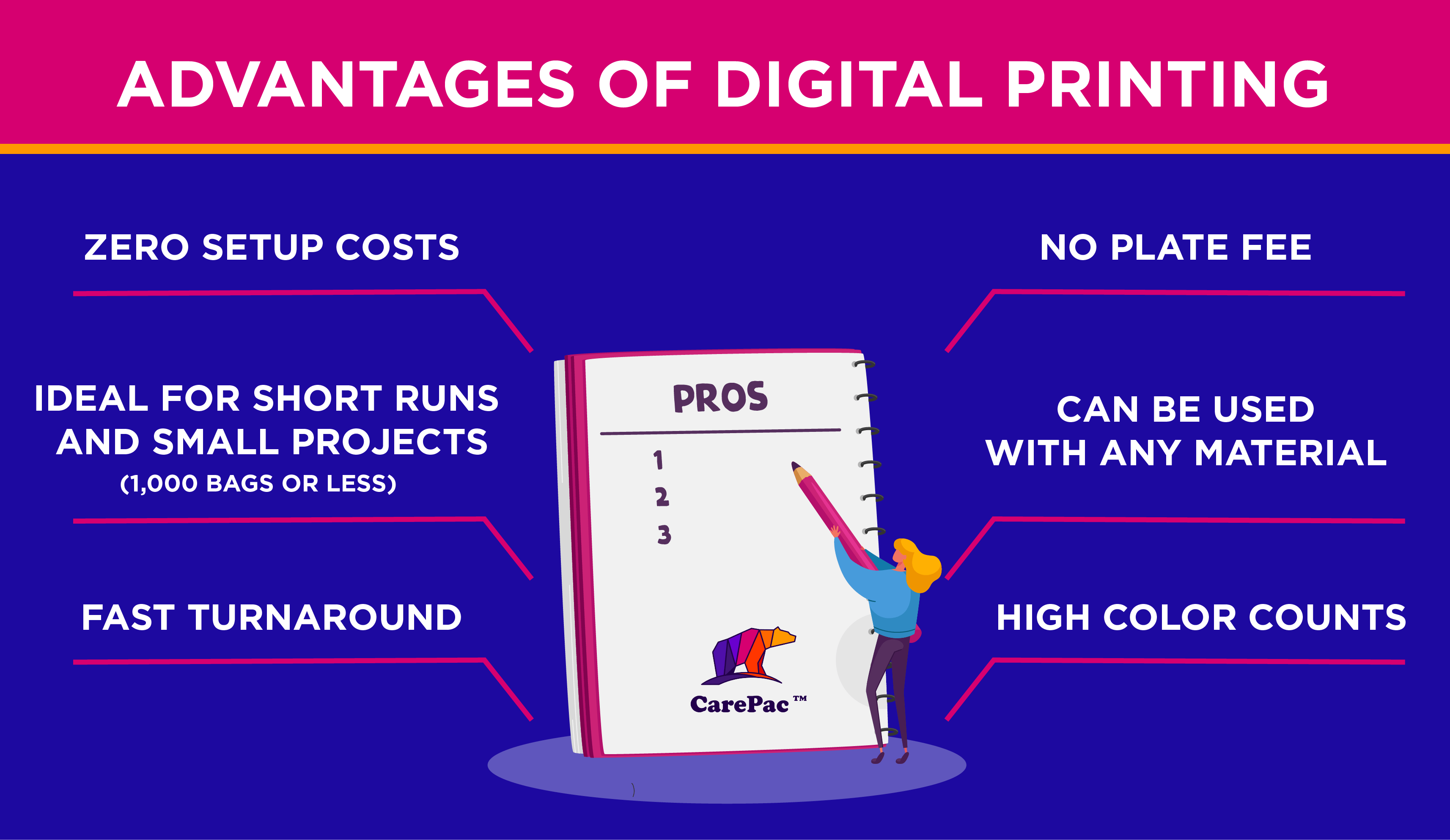About Digital Printing
About Digital Printing
Blog Article
Excitement About Digital Printing
Table of Contents4 Easy Facts About Digital Printing ShownGetting My Digital Printing To WorkThe Best Strategy To Use For Digital PrintingDigital Printing for Dummies10 Simple Techniques For Digital PrintingThe Of Digital Printing
Variable data printing, such as straight mail with individualized codes and addresses, is ideally suited for electronic printing. Digital quick printing just needs 4 steps of layout, evaluation, printing and binding to obtain whatever done. Digital quick printing has an unequaled benefit: print on need.According to PMMI, digital printing enables brand names and suppliers to react quickly to consumer demands while enhancing the supply chain, decreasing warehousing price and waste, and enjoying faster time to market. That all audios wonderful, yet how does this innovation do all that? The significant differentiator of these innovations is that there are no set-up charges and no plates with digital printing.
Facts About Digital Printing Uncovered
According to Wikipedia, the best distinction between digital printing and traditional methods such as lithography, flexography, gravure, or letterpress - Digital Printing is that there is no need to change printing plates in digital printing, whereas in these analog printing techniques home plates are repetitively replaced. This causes quicker turnaround time and reduces price when using digital printing.
Digital printing is extremely flexible, so it's easy to make adjustments to the plan design quickly. It all goes back to the plates.
With standard printing techniques, short-run printing is just not possible. Because a great layout can make or break your product, electronic printing continually develops high-quality, clear and colorful graphics each time.
Digital printing is the process of printing digital-based images straight onto a range of media substrates. There is no demand for a printing plate, unlike with countered printing. Digital files such as PDFs or desktop publishing documents can be sent straight to the digital printing machine to print on paper, picture paper, canvas, material, synthetics, cardstock and various other substratums.
The Basic Principles Of Digital Printing
According to PMMI, digital printing enables brand names and manufacturers to respond rapidly to customer demands while improving the supply chain, minimizing warehousing expense and waste, and enjoying faster time to market. That all audios great, but just how does this innovation do all that? The major differentiator of these innovations is that there are no set-up charges go right here and no plates with electronic printing.
According to Wikipedia, the biggest difference between electronic printing and conventional approaches such as lithography, flexography, gravure, or letterpress is that there is no need to replace printing plates in electronic printing, whereas in these analog printing methods the plates are continuously changed. This leads to quicker turn-around time and lowers cost when making use of digital printing.

The 8-Minute Rule for Digital Printing
A lot more inventory can imply even more waste later on. With conventional printing approaches, short-run printing is just not feasible. Due to the fact that a great style can make or break your product, electronic printing regularly creates premium, clear and colorful graphics each time. Digital printing on flexible bags adds the bright, dynamic, and accurate graphics that practically bid consumers to connect and touch them.

According to PMMI, electronic printing permits brands and producers to react quickly to consumer demands while boosting the supply chain, minimizing warehousing cost and waste, and enjoying faster time to market. That all sounds excellent, however how does this innovation do all that? The major differentiator of these modern technologies is that there are no set-up charges and no plates with digital printing.
The Only Guide for Digital Printing
This results in quicker turn-around time and decreases expense when utilizing digital printing.
Fast production implies obtaining your item to market quicker. It likewise suggests it's easier and faster to make adjustments in the future, when you change a recipe, add a SKU, or develop seasonal product packaging. Digital printing is very adaptable, so it's simple to make adjustments to the plan style promptly. All of it goes back to home plates.

5 Simple Techniques For Digital Printing
Digital printing is the procedure of printing digital-based images directly onto a variety of media substratums. There is no requirement for a printing plate, unlike with countered printing. Digital data such as PDFs or desktop computer publishing documents can be sent out directly to the electronic printing machine to print theoretically, picture paper, canvas, material, synthetics, cardstock and other substrates.
Report this page